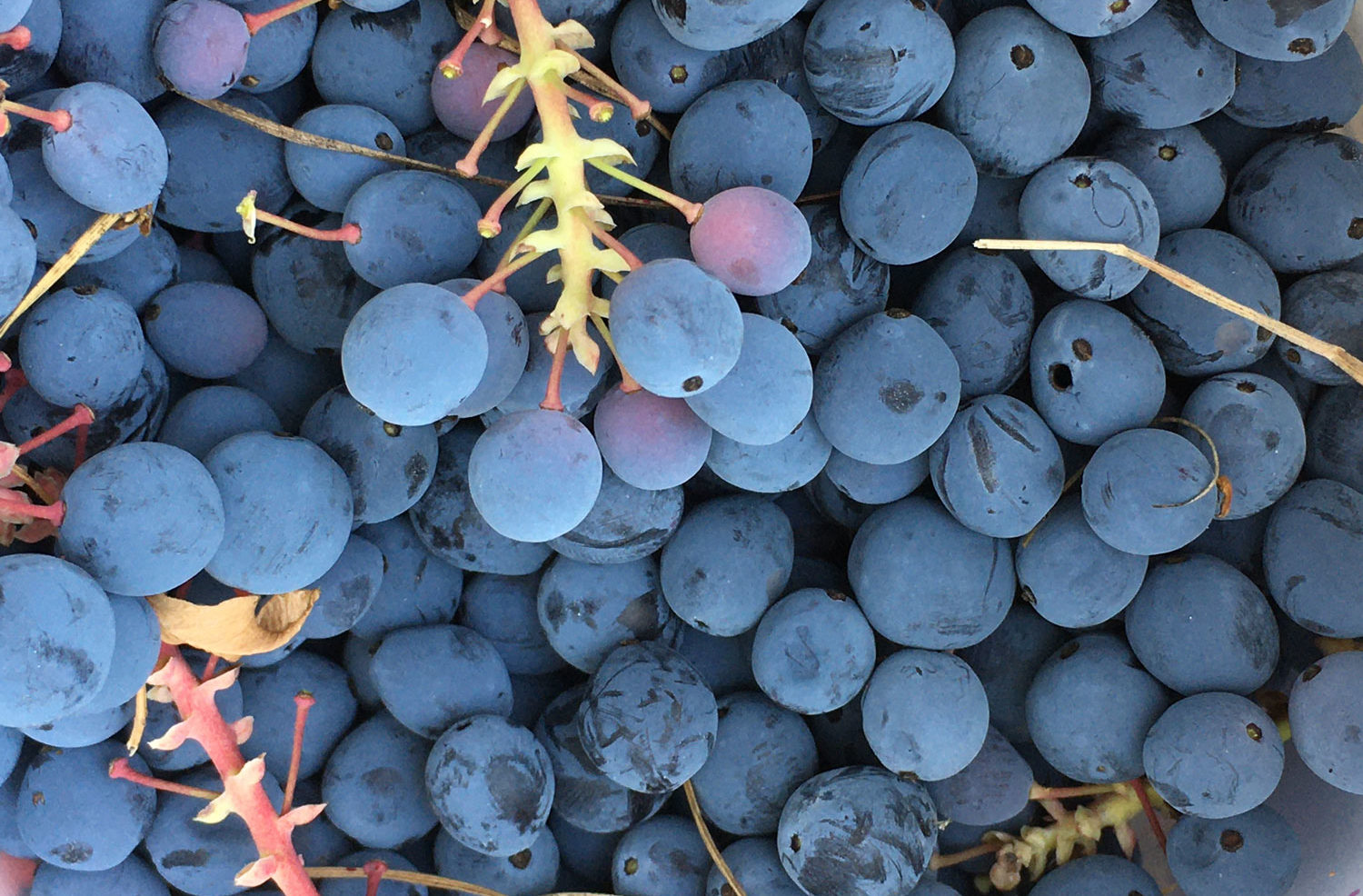
On a perfect fall morning in a tunnel of quaking aspen, where the sun illuminates the warm pigments of autumn’s change against a brilliant blue sky, there is more to see than just the colors trembling overhead. Across the forest floor spotted with round yellow leaves, Oregon grape (Mahonia repens) puts on a cool contrast with its fat clusters of periwinkle berries on electric backdrops of brilliant fuchsia and pastel pink. It you crush them, that soft blue metamorphoses into a tart, violet-red juice capable of transforming even the simplest confection into an otherworldly delight.
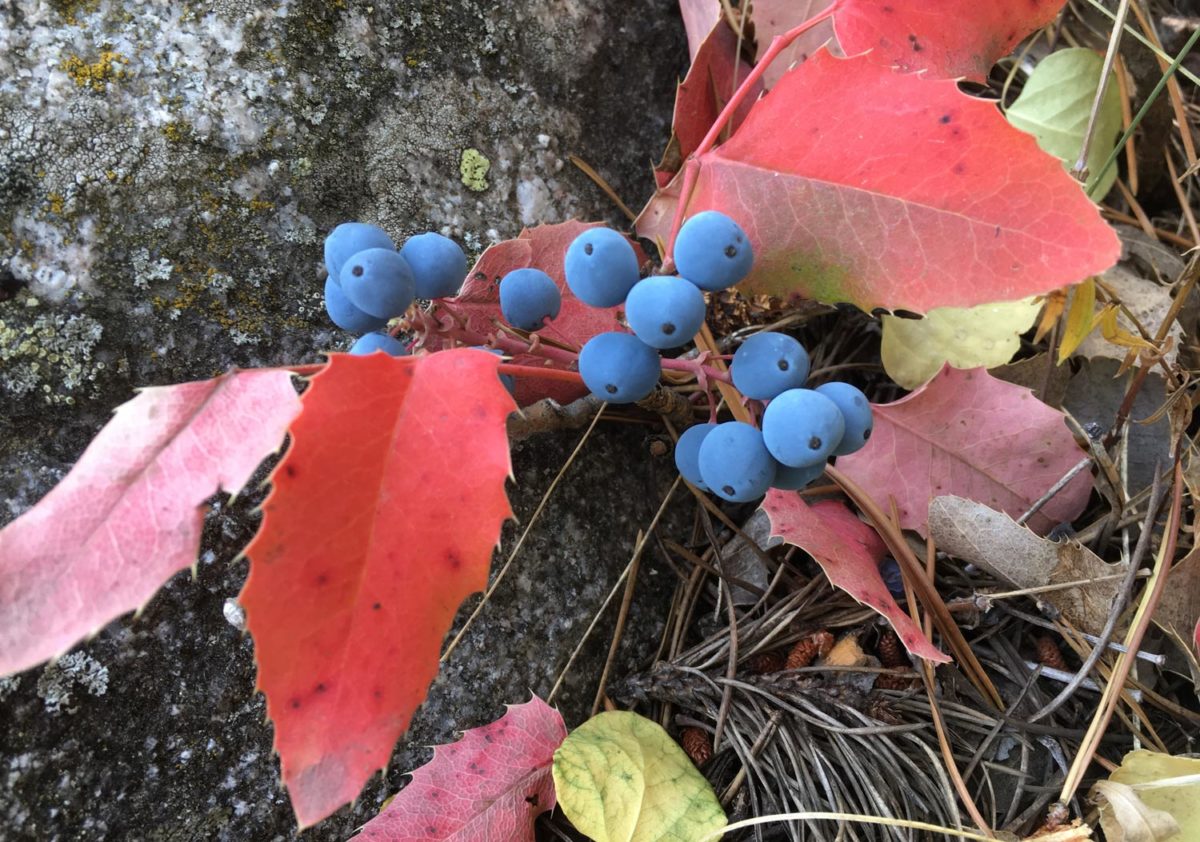
Also called holly grape, Oregon grape is an evergreen plant with thick, holly-like leaves that forms a low groundcover. Other names—creeping barberry, creeping Mahonia, and creeping Oregon grape—describe how it crawls on horizontal stems under the leaf litter. The inner bark is bright yellow and can be used as a dye; it is also strong medicine.
Although considered a shrub, this species rarely exceeds calf-height in the Intermountain states. The typical leaf has 5-7 leaflets arranged opposite each other with the odd one at the tip (odd-pinnate). Spines tip the end of each tooth. In spring, Oregon grape produces light-green leaves that are edible while still soft, and dense racemes of up to 50 lemon-yellow flowers, also edible. The powder-blue berries that come later look a bit like clusters of grapes, although they are related to neither grapes nor holly.
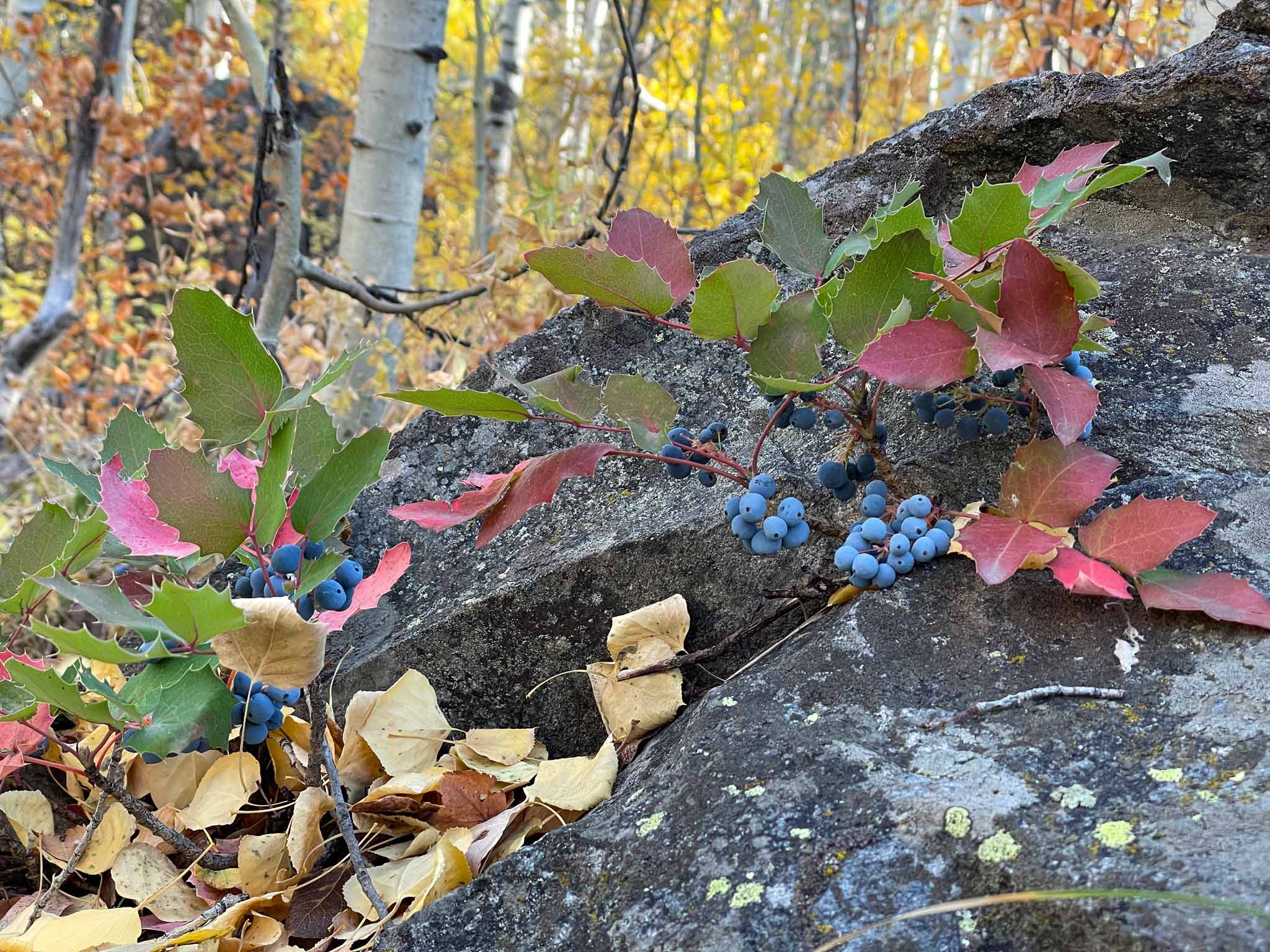
Closely related species can be used similarly. Two of the more widespread include dull Oregon grape or Cascade barberry (M. pinnata) and tall Oregon grape (M. aquifolium), both of which are native to the Pacific Northwest. The latter, however, is a common landscaping plant found well beyond its range, in some areas escaped from cultivation. I collect mine from a Denver hedge.
Although Oregon grape berries have a reputation for bitterness, I just find them extremely sour—nothing a little sweetener can’t rectify. If there’s been good moisture, they can be sweet and plump enough to enjoy as a tart trail snack, replete with all the mouth-puckering, gesturing, and antics that entails. The seeds are edible but somewhat firm and bitter, so I usually spit them out as I go.
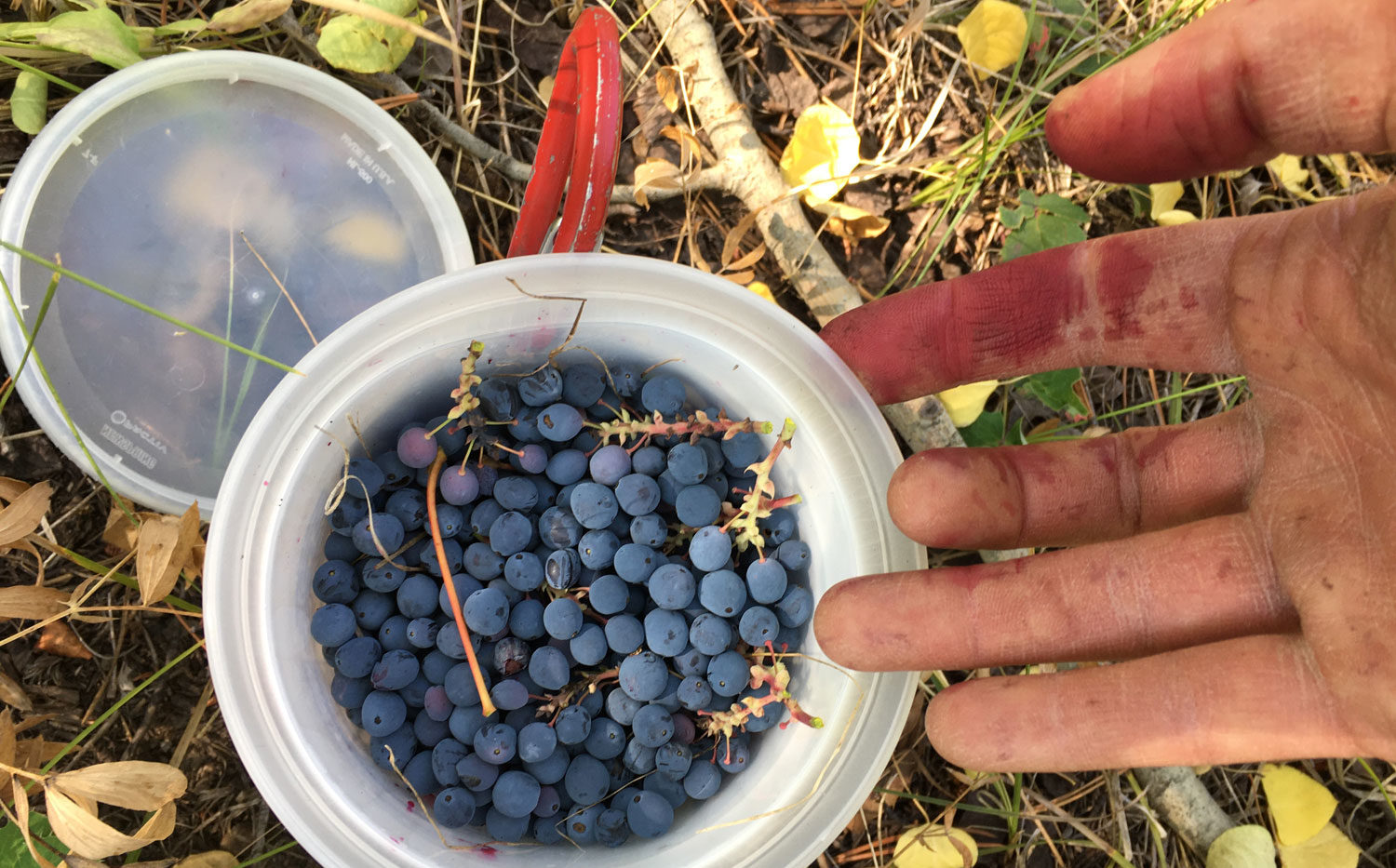
The berries are easy to collect in quantity–just strip them into a container. I usually do this bare-handed and wash the short-lived stain off later. Back in the kitchen, Oregon grape excels in preparations where the seeds are discarded. They can be crushed raw like grapes or steamed gently in a dash of water, then wrung through a nut bag or cloth to extract the deep purple liquid. When I press them raw, I like to do a first press for the very concentrated juice, and then add water to the mashed fruit, crush again, and strain. The second press is nice for Oregon grape lemonade.
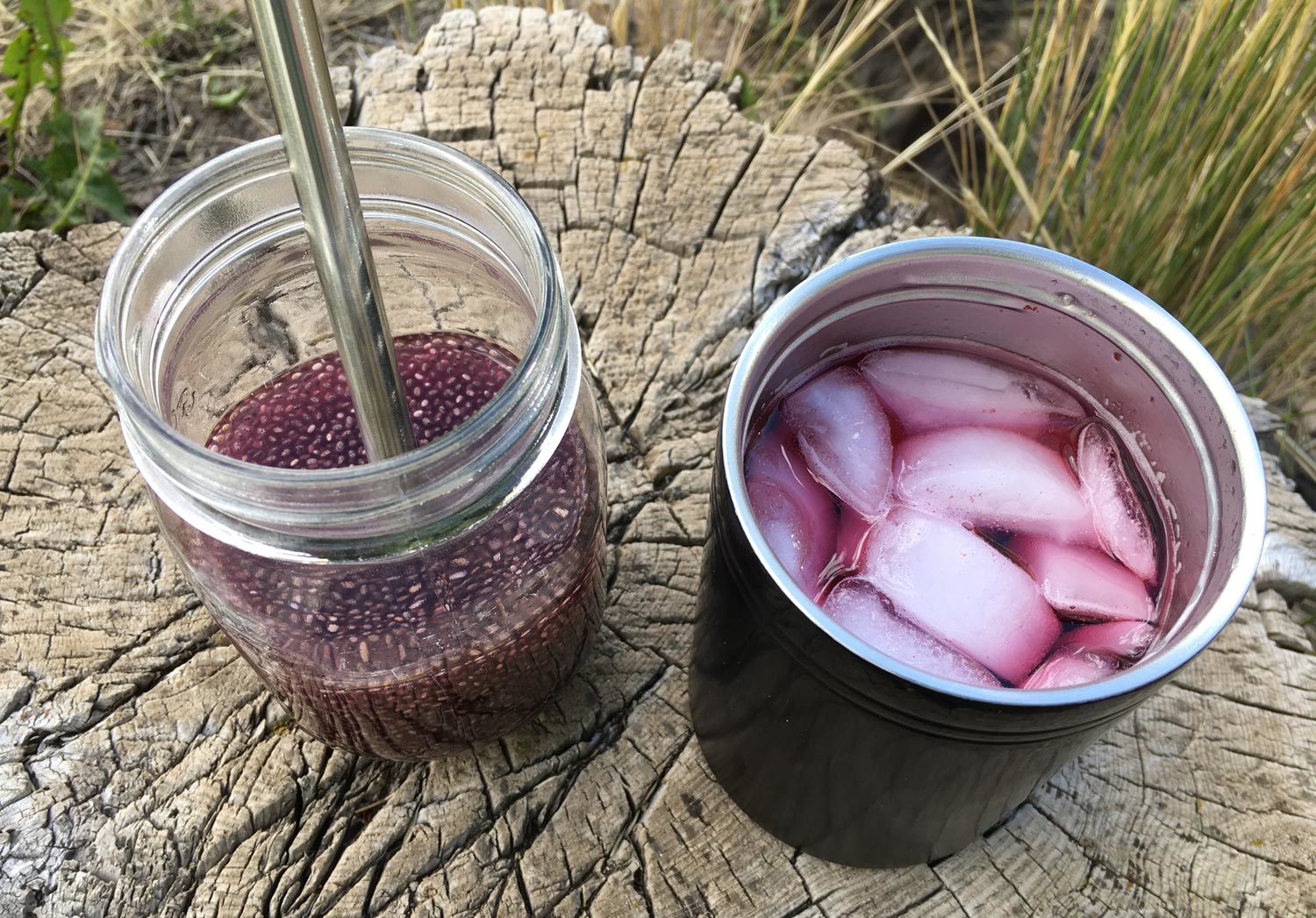
There is much to make with concentrated Oregon grape juice. It makes a great jelly sweetened or combined with other berries, and even better wine. Add chia seeds to jazz up the lemonade or transform it into wild sherbet.
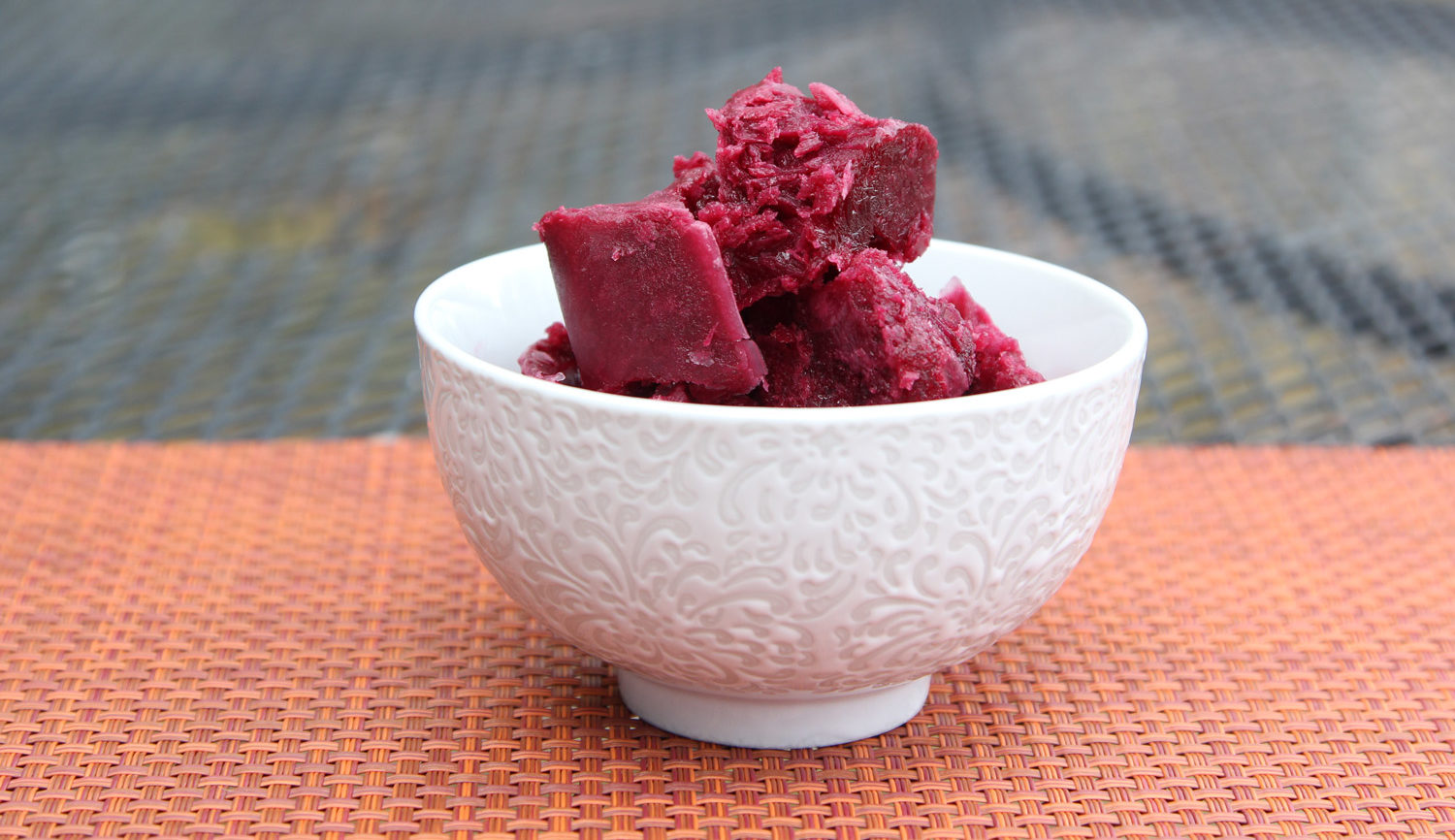
I made this sherbet last year following the simplest old-timey recipe I could find: Dissolve 1.5 cups sugar into 2.5 cups warmed juice. Cool. Mix in 1 cup milk. Freeze until stiff. I suspect recipes that use corn syrup might produce a better texture, as this came out a bit popsicle-like, but it couldn’t have been simpler and tasted great. Now that I eschew both sugar and milk, a less indulgent recipe is probably forthcoming.
In the meantime, I’m sure you can find something amazing to make with this woodland beauty.
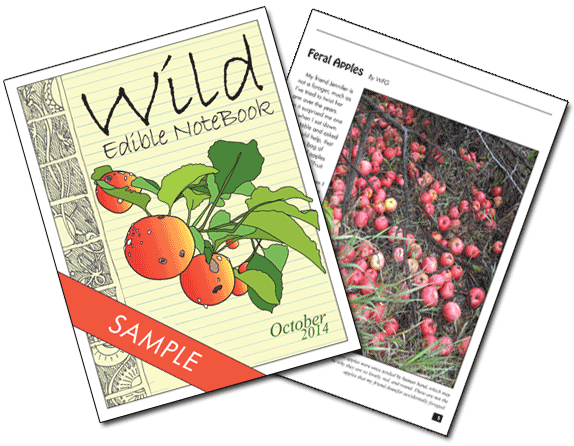
Consuming too many seems to have elevated my liver enzymes to quite high levels.
Hi Bruce, thank you so much for sharing that. Can you share any details? How much did you eat? Did you eat the seeds or just the fruit? How do you know it was the Oregon grape? Why is it bad? Thanks so much.
Love Oregon-grape — it’s tart but also often has this really refreshing herbal grassiness that’s unlike any other berry I know. Many of the landscaping Mahonias (now all lumped into the Berberis genus I guess?) are horticultural hybrids and have kinda nasty tasting fruit in my experience. Maybe that’s where the bitter reputation comes from? I haven’t noticed much bitterness in wild specimens.
Thank you for sharing that! I’ve been internally debating the whole bitter versus sour thing. Sounds like I need to sample some more landscaping. Are you eating M. repens or also the taller species in the wild?
Even though some authors prefer the name Berberis for the whole group, there seems to be disagreement, and I like keeping the Mahonias separate. I think the old distinction–generally speaking, the Mahonias have evergreen, compound leaves with marginal spines and spine-free branches, and those in Berberis have simple, deciduous leaves with spines on the branches–is useful.
M. repens doesn’t grow wild where I live (BC coast), so I’ve only tasted it once or twice. But M. aquifolium and M. nervosa are super common here so I’ve eaten those plenty of times. M. nervosa is my fave flavour-wise, but it’s a small plant that doesn’t bear fruit heavily.
I believe the horticultural hybrids are mostly Mahonia × media, bred from Asian species. They often have a bitter tonic-y grassy quality that I find off-putting. Luckily they are pretty easy to tell apart visually.
Definitely agreed on the practical usefulness of the Mahonia genus!
Oregon grape will sweeten up if you wait until after the first good Frost to harvest them. Blessings
Yes Bruce it’s recommended that folks with liver issues be careful. I learned from Indigenous folks but this explains it pretty ok. Also if you’re on liver meds be advised it can change how they work.
https://www.verywellhealth.com/oregon-grape-benefits-4590368